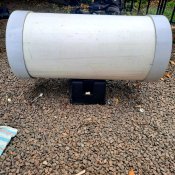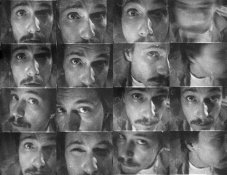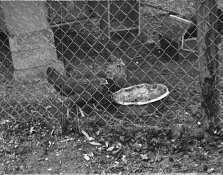Rather than go for broke, I snipped out and developed with my first partial roll of 16mm film (approximately 40 feet) exposed with a B&H 240-TA in a Morse G3 tank. Loading was straightforward but I did get insight into developing & fixing times as well as possible camera issues. Loading the tank was rather straightforward, even in the dark. Reeling 40ft of film wasn't too onerous, but I can see why 100ft at a time would be too much for some people.
Orwo N74+ 400
Prewet 3:00 (2x reel winds)
Xtol 1+1 20:00 (20x)
Stop Bath 3:00 (2x)
Non-rapid fix 15:00 (15x)
Wash 10:00 (8x)
The negative image was underdeveloped, thin but not un-scannable. Unprojectable, certainly. I'll use a stronger developer or more time in the future. There was also under-fixing which doesn't come entirely as a surprise as I used a non-rapid fix. Rapid fix or more time, again, in the future. It may have been wiser to shoot my ortho stock first so I could have done development by inspection.
I can't speak very well to the evenness of development down a length of film, but individual frames seemed to have fared well. There was an occasional light leak from the camera that appeared to drown out 4 or 5 frames at a couple of places, but more disturbingly, a persistent linear scratch in at least one place along the film. Likely caused by the camera rather than the tank (see left half of chicken frame).
As I currently lack any means to efficiently project or digitize long lengths of film, I'm more than happy to use the 240-ta as a high-speed 16mm stills camera for the time being, shooting & processing 20-50ft at a time. Enough throughput for the occasional vintage gif, perhaps. I'll probably add a couple of teflon washers to the reel spindles to reduce noise but all in all I'm pretty chuffed with the Morse.
Stills
View attachment 263927
Motion grab
View attachment 263928








